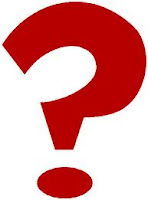An unhappy amateur string player writes:
 "So many pianists love to play with strings, but have little awareness of appropriate voicing. Young professional groups have the same problem, using a full stick that overpowers the sound."
"So many pianists love to play with strings, but have little awareness of appropriate voicing. Young professional groups have the same problem, using a full stick that overpowers the sound." I feel (hear) his pain. There is nothing worse than playing one's heart out only to have it trod upon by inconsiderate colleagues. Every player wants his/her lovely inflections to be heard and responded to musically. I think the operative word here is consideration, which is about listening to one another and not about the length of the piano stick. I write as a professional collaborative pianist and amateur string player.
I feel (hear) his pain. There is nothing worse than playing one's heart out only to have it trod upon by inconsiderate colleagues. Every player wants his/her lovely inflections to be heard and responded to musically. I think the operative word here is consideration, which is about listening to one another and not about the length of the piano stick. I write as a professional collaborative pianist and amateur string player.The piano sounds muted if the lid is closed. This would be similar to the string players putting on their mutes, and no one wants to play like that. The short stick can be a solution if the piano is particularly bright and the room is small. But the raised lid is not so much about volume as it is about quality of sound. And here is where the importance of listening comes into play. Very often in amateur groups, the pianist can feel so overwhelmed with the difficulties of his part that there is a disconnect between the ear and the hands. The obvious solution here is that the pianist learn his part.
But let's say the pianist is in control of the notes and is free to listen. He should be able to hear his colleagues, especially the leading voice(s), just slightly above what he is playing, keeping in mind that the music rack blocks much of what he hears of himself. If he hears his colleagues free and clear, well above what he is playing, then he is too soft and not playing as a full partner. And, of course, if he doesn't hear them at all, he is too loud.
The string player points out: "Chamber Music has traditionally been played on small instruments in intimate settings. After all, pianos originated in the quiet voices of seventeenth and eighteenth century harpsichords and clavichords."
 Any pianist can obliterate any string player sonically. This is a given. It is, however, misleading to equate modern instruments with those of the 18th century. Early keyboard instruments were indeed more demure, but so were their string colleagues. Whether the development of these instruments into their modern counterparts was proportional I can't really say, although I suspect the piano made greater strides with its concert hall sizes and the introduction of metal harps. I have to say, though, that's it's a rare situation to find a concert grand housed in a private setting. So size isn't very often an issue.
Any pianist can obliterate any string player sonically. This is a given. It is, however, misleading to equate modern instruments with those of the 18th century. Early keyboard instruments were indeed more demure, but so were their string colleagues. Whether the development of these instruments into their modern counterparts was proportional I can't really say, although I suspect the piano made greater strides with its concert hall sizes and the introduction of metal harps. I have to say, though, that's it's a rare situation to find a concert grand housed in a private setting. So size isn't very often an issue. Let's make a very general assessment of the repertoire. In the classical period strings began as an obligato addition to the piano part, sometimes only doubling the piano. This is particularly prevalent in many Haydn trios and all but a hand full of Mozart violin sonatas. In the Mozart piano quartets, the piano part is very concerto like. With Beethoven, even already in Op. 1, we begin to get a more equal division of labor. And in the 19th century, finally, we get sonorities of strings vs piano in passionate struggle (I'm thinking of Brahms). Chamber music has traditionally been played in parlors, in intimate settings, yet the music itself has evolved into anything but intimate.
Finally, a word about the practical nature of the setup. The cellists, of which I am one, complain the loudest. He is usually placed right in the bend of the piano, where he is pummeled with sound. What he hears next to him, though, is not what a listener several feet away hears. It's natural for musicians to play to the room and not to the person sitting next to him. The cellist feels the need to either play forcefully all the time or make threatening grimaces at the poor pianist, when it may not really be his fault. So I always suggest, if feasible, that the strings find positions somewhat away from the piano. Or, alternatively, rethink the nature of projection and play for each other instead of for the room. In concert halls I have heard all periods of music played superbly with appropriate balance, yes, using a concert grand with the stick on full extension.


